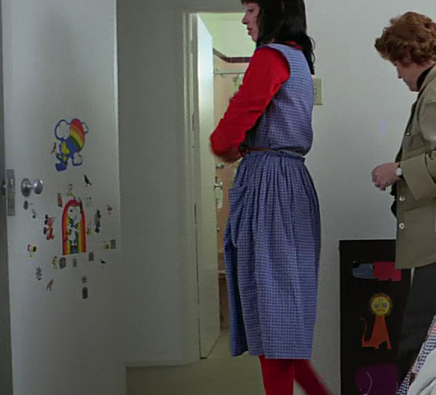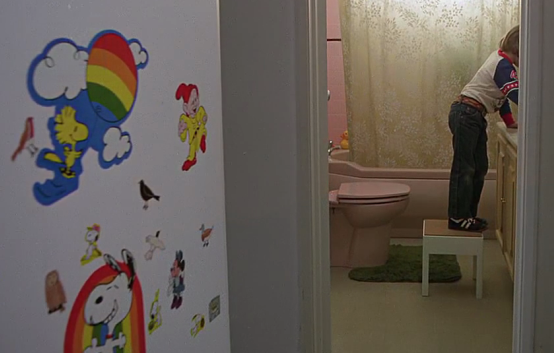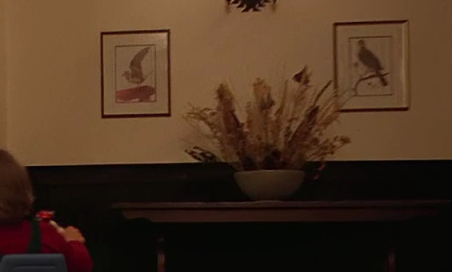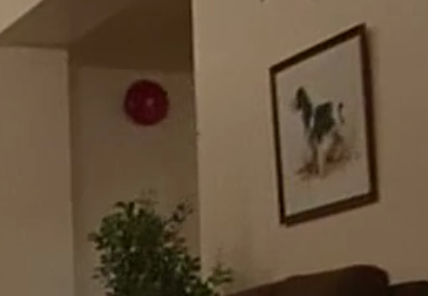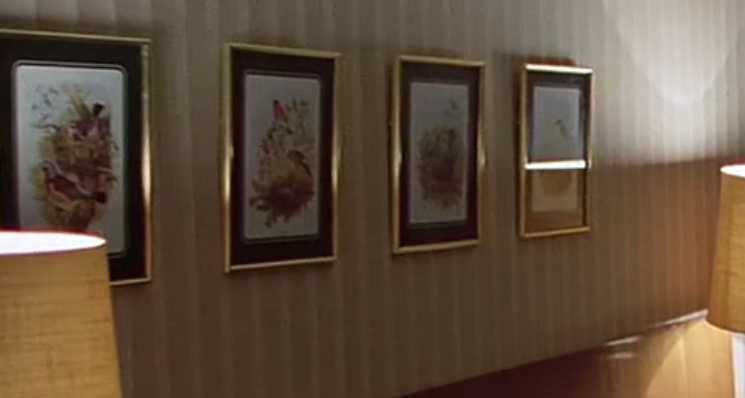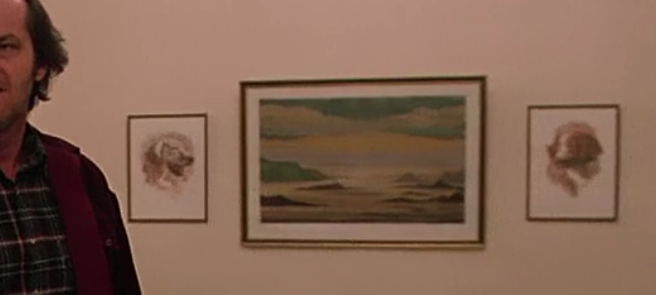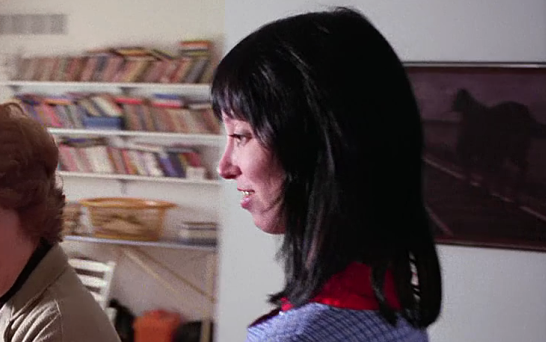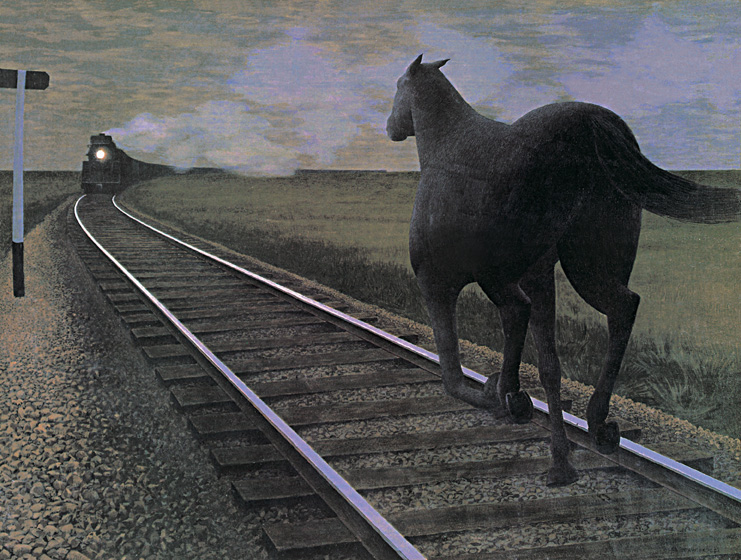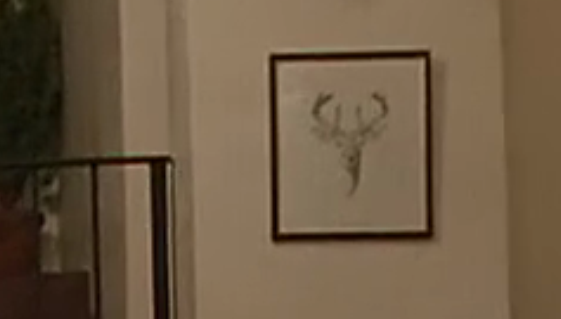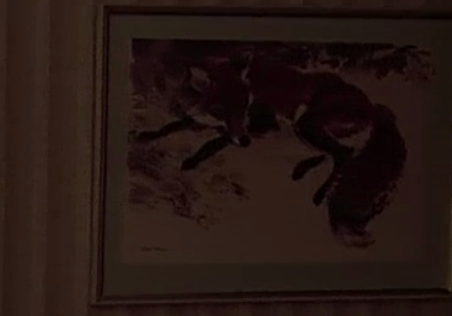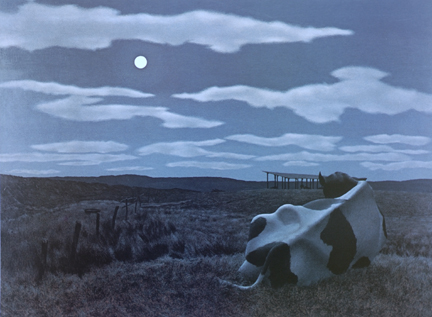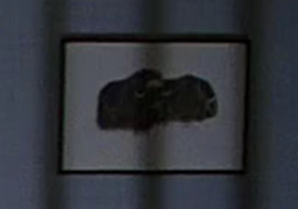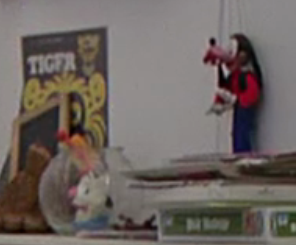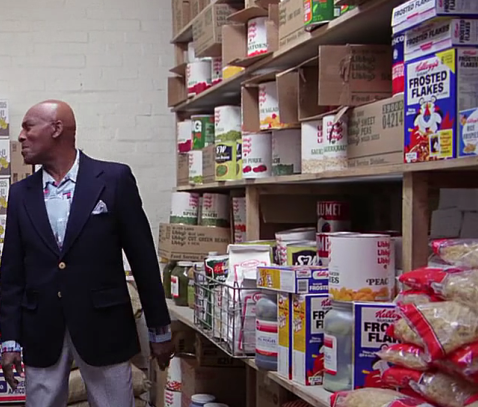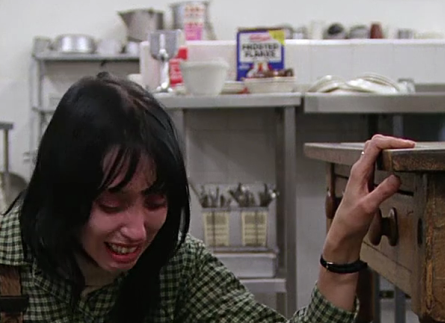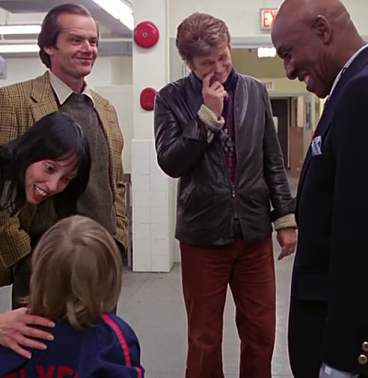CHAPTER TWENTY-ONE The last major theme that we haven’t explored in depth is the identity of Danny’s so-called “imaginary” friend, Tony. We did explore in previous chapters that in Danny’s first Shining vision he’s talking to himself in a mirror, in other words he’s talking to himself rather than Tony. We also explored that when he has his kitchen conversation with Halloran that the two characters were mirroring each others body language (eg clasped hands on the table) and that Halloran was positioned in front of a symbolic mirror – the same shiny door through which Jack was talking to Grady (himself) in the store room. So in effect this may have been a dream sequence in which Danny was talking to himself again. So far it’s all straight forward – Tony is Danny’s subconscious warning him that something isn’t right with his Father and with the Overlook Hotel (The United States). But … there are many other symbolic manifestations of Tony, which suggest a variety of additional meanings. One of those alternative meanings was suggested in the last chapter - that Tony is the body that flops out of the elevator (Danny's mouth) in the river of blood. When being interviewed by the psychiatrist Danny is asked, “Is Tony one of your animals?” He denies this to be the case, but in the wide shot of the bedroom we see several animals. Some of them are stickers on Danny’s door – several species of bird, an owl, a duck, Mickey and Minnie Mouse, and a few Snoopy stickers. The large sticker of a yellow bird is called Woodstock and is from the cartoon Charlie Brown. Woodstock is chasing a ball, which is important because it was a ball that lured Danny toward the symbolic room 237. something interesting is that large sticker of one of the Seven Dwarves is present as Danny brushes his teech yet missing in the psychiatrist scene.
Between Wendy and the door is a black monolith shaped piece of card with crude paintings of three animals on it. The animals appear to be 1) a smiling dog wearing a red coat 2) an orange cat or lion with a yellow head that appears curiously like the sun, and 3) a grinning purple elephant. To the right we see the Goofy figure, a cartoon animal, which is wearing the same clothes as Wendy. Next to Goofy is a book with TIGER written on it above a cartoon face of a tiger seen creepily peaking out from behind a small chalk board. The curtains appear to show a cartoon character holding a baseball bat and part of a white cartoon face laughing aloud (possibly a foreshadow of Wendy’s baseball bat encounter with Jack). On the window ledge is a yellow duck. The same duck was seen peaking out from behind the curtains in the bathroom just a few minutes earlier and so probably symbolizes a laughing Jack Torrance just as the laughing woman in room 237 did. The duck’s position on the window ledge, backed by false light, also suggests that it is Jack, the domineering husband, “pulling Wendy’s strings” so to speak.
In the close up of Danny we see that his pillow is a laughing or screaming teddy bear and on his t-shirt is Bugs Bunny and a basketball net.
One of the frequent complaints about The Shining is that Kubrick didn’t include the moving hedge animals from Stephen King’s book, but judging by the number of animals in the psychiatrist scene alone, it’s possible that Kubrick reinterpreted the animal theme to appear in the films props. The HiDef version of the film makes a variety of props more clear, and something that quickly becomes apparent is that there are a huge number of depictions of animals throughout the entire film. Dozens of animal pictures can be found.
Alex Colville's painting, Horse and Train, is visible in the Torrance apartment as Wendy walks the psychiatrist into the living room.
A deer’s face is seen in Danny’s tricycle scene near room 237.
A fox picture hangs to the right of the room 237 bathroom.
As Wendy runs up a stairway she passes a Colville picture titled Moon and Cow.
And a moment later a picture of two buffalo hangs to the right of the doorway where she sees the bear suited man.
Then of course we have the various manifestations of bears already explored in chapter seventeen. There are lots of animal images in The Shining. One of the more interesting of these animal images is the aforementioned tiger face in the psychiatrist scene.
This is probably a manifestation of Danny’s imaginary friend because at two later points in the film we see a similar tiger face on a box of cereal. The first is on a shelf in the upper right as Halloran talks about the different foods in the storeroom.
And the second is seen peering from a table behind Wendy as she argues with Jack through the storeroom door, having locked him in.
This makes sense in the subliminal narrative because for Danny to set a trap for Jack and release him from the storeroom would require that he be aware that Jack had been locked in there. So perhaps the tiger on the Frosted Flakes box represents Danny spying on the proceedings. And then there’s one other small, but very significant detail … the trademark cartoon character seen on Frosties boxes is called Tony the Tiger. It’s also possible that Tony is manifested as a bear in some scenes. Both the psychiatrist and Ullman have reddish fluffy hairstyles, giving them a bear-like appearance. The psychiatrist wears a brown coat and Ullman has been described as wearing a huge brown coat in the deleted ending scene, again giving him the appearance of being a bear. When Danny is offered ice cream by Halloran outside the storeroom, watch Ullman, the symbolic bear. He stares down at Danny with a knowing smile as he very slowly scratches his face with his index finger – the exact same finger wagging movement that Danny makes when talking to Tony.
Adding to all this is the fact that Tony speaks in a gruff voice, like an animal, and in Danny’s first scene he speaks to his Mother through his wagging finger, but on this occasion using a mouse-like voice. It’s possible that Kubrick developed the assorted animal themes in The Shining by researching Psychodrama and Art Therapy. These two disciplines often involve clients play acting their past traumas through fictional characters. In particular the drawing of the abused and abuser as symbolic animal characters has been known to help children break through amnesia, while maintaining emotional disassociation.
Thanks for reading The remainder of my research on The Shining (gathered over six years) is available in additional Videos and PDF articles, which are listed on my Film Analysis page.
|
